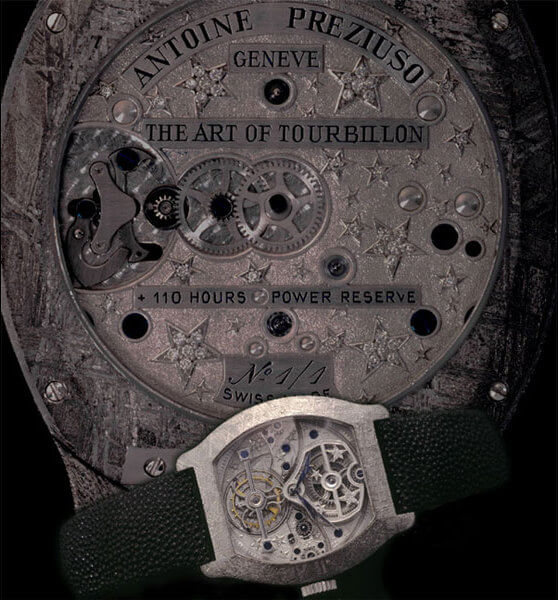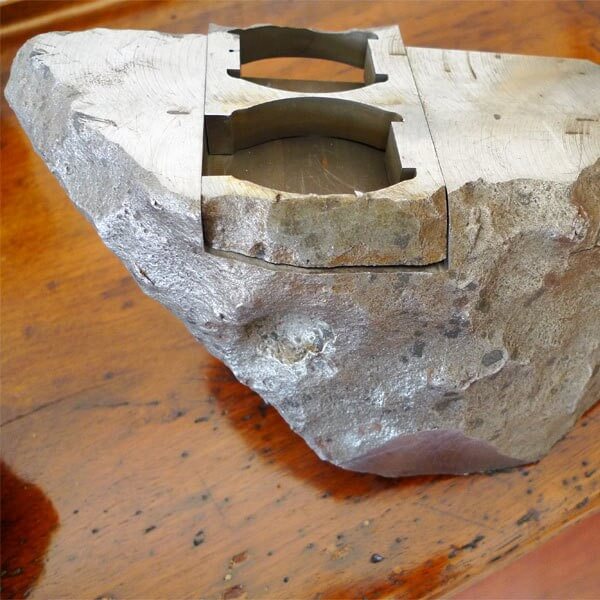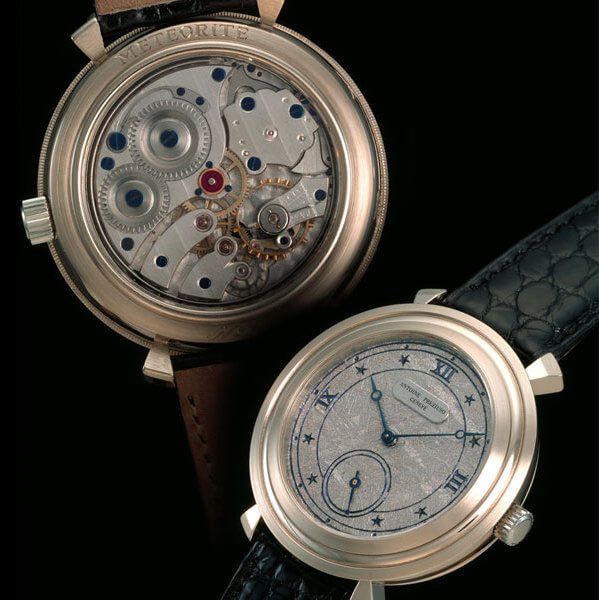Meteorites have never ceased to fascinate humankind. These heavenly bodies – meteoroids or asteroids when still in space, meteorites when they have plummeted to earth – intrigue by virtue of their mysterious and cosmic origins. Pieces of meteorite have been discovered in many everyday and sacred objects over the centuries. A dagger forged from meteorite was found inside Tutankhamun’s tomb. The black stone set into the eastern corner of the Kabah, in the Grande Mosque in Mecca, was long believed to be a meteorite. The Book of Revelation foretells how “the stars in the sky fell to earth, as late figs drop from a fig tree when shaken by a strong wind.”
Time and space
This fascination has lost none of its potency, including among watchmakers who for the past several years have proposed models with a meteorite dial, Bovet, Corum, Jaquet Droz, Louis Moinet and Omega among them. One, Antoine Preziuso, blazed a trail with a “meteoric” model launched in 1991. “I also began with the dial, on my Quarter Repeater to be exact. But once is never enough with something this magical. Thousands of questions went through my mind as I worked. I learned about the rare metals such as germanium that enter into the meteorite’s composition. I read countless fascinating stories about them. This combination of space and time is the ultimate invitation to explore new horizons.”
Antoine Preziuso continued his quest, using meteorite not only for dials but for hands, buckles, crowns and most importantly cases, with the Tourbillon Meteor in 2001, the Tourbillon Muonionalusta and Chrono Grand Robusto Meteor in 2004, the New Art of Tourbillon in 2006, the Next Full Moon in 2007 and last year’s The Art of Tourbillon Meteor. “Of course these are all one-offs, with the exception of the Next Full Moon for which I still have enough cases for a total of eight to ten pieces. I keep a tiny piece of meteorite from each one for my customers, who appreciate being able to associate the raw material with the finished piece. Meteorite is a material that leaves no one indifferent, as a recent visit to Japan confirmed.”

Wanted: meteorite hunter
The distance that separates the idea from the finished timepiece is almost as impressive as a meteorite’s trajectory to earth. Says Antoine Preziuso, “The major difficulty is finding the right meteorite hunter, the Indiana Jones who will scour the planet, particularly now that bringing meteorite out of a country has become more complex, and that so many fakes are being offered for sale. The two I have found, one in the French Jura and one in Chamonix, are probably among the most talented there are. As for the iron meteorites which I use, my preference goes to the Muonionalusta from Lapland and the Gibeon from Namibia. The latter reveal beautiful figures known as Widmanstätten patterns when treated with acid. Every last fragment is used, knowing that the price of meteorite exceeds the price of gold. Leftovers from manufacturing cases are used for hands, buckles and crowns, and my daughter uses the leftovers from the leftovers, so to speak, to make jewellery.”

The second difficulty of working with meteorite lies in machining a material which can be as hard as diamond in some places and extremely soft in others. “You’re never entirely safe from surprises. It’s important to learn which are the right cutters to use, the right tools, the right amount of acid, which surface treatment to choose, in my case rhodium-plating or black gold-plating, even leaving the raw “crust” which is the part of the meteorite that burned on entering the atmosphere. It is all very enjoyable though with some truly exceptional timepieces at the end.”



















